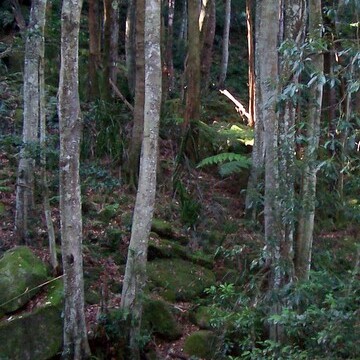Trees, monoecious. Leaves paripinnate; leaflets usually opposite, entire or crenulate-serrulate, pale and glaucous below, pellucid-punctate. Inflorescence panicle-like, axillary or ramiflorous, solitary or clustered; cymules stalked. Flowers small, regular or slightly irregular; pedicels slender. Calyx 5-sect, lobes 2-seriate, orbicular or elliptic, unequal. Petals 5, subobovate or subrhomboidal, usually clawed; scales 2-lobed, hairy, usually slender and crested. Disc unilateral or complete, glabrous. Stamens 6–8; filaments usually pilose. Ovary 3-locular; ovule 1 per locule; style filiform; stigma 3-lobed. Fruit broadly obcordate, deeply 3-lobed, apiculate, loculicidally dehiscent; valves thick, glabrous. Seed ellipsoidal; aril thin, tailed, nearly enclosing seed.

